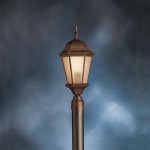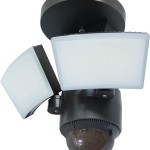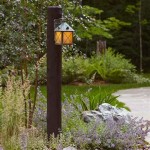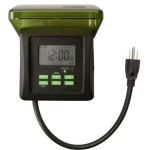How To Properly Clean Outdoor Cushions
Outdoor cushions are an essential component of comfortable and inviting outdoor living spaces. These cushions, designed to withstand the elements, often enhance the aesthetic appeal of patios, decks, and porches. However, prolonged exposure to sun, rain, dirt, pollen, and other environmental factors inevitably leads to staining, discoloration, and the accumulation of mildew or mold. Regular and proper cleaning is therefore crucial to maintain their appearance, extend their lifespan, and ensure a hygienic outdoor environment. This article provides a comprehensive guide on how to effectively clean outdoor cushions.
Before embarking on any cleaning process, it is vital to identify the type of fabric used in the construction of the outdoor cushions. Different fabrics require different cleaning approaches, and using the wrong method can cause irreversible damage, including shrinkage, fading, or degradation of the material. Typically, outdoor cushions are made from materials like acrylic, polyester, olefin, or a blend of synthetic fibers. Manufacturers often include care instructions on a tag attached to the cushion. This tag should be carefully reviewed to determine the recommended cleaning methods and any specific warnings. If the tag is missing or illegible, a small, inconspicuous area of the cushion can be tested with a chosen cleaning solution to assess its compatibility with the fabric.
Identifying the Cushion Fabric and Understanding Care Instructions
The first step in properly cleaning outdoor cushions is accurate fabric identification. Acrylic fabrics, such as Sunbrella, are known for their durability and resistance to fading. They can generally withstand more rigorous cleaning methods. Polyester fabrics are also relatively durable and easy to clean. Olefin fabrics are naturally stain-resistant and resistant to mold and mildew. However, they may be more susceptible to damage from high heat. Knowing the specific composition of the fabric allows for the selection of appropriate cleaning agents and techniques.
Once the fabric has been identified, the care instructions must be thoroughly understood. These instructions typically outline the recommended cleaning solutions, water temperature, and drying methods. Some cushions may be machine washable, while others may require hand washing or spot cleaning only. Ignoring these instructions can lead to significant damage to the cushions. For instance, machine washing a cushion that is intended for hand washing can cause the seams to tear or the filling to become unevenly distributed. Similarly, using bleach on a fabric that is not bleach-safe can result in discoloration and weakening of the fibers.
If the care instructions are unavailable, a general approach that prioritizes gentleness is recommended. Start with the least aggressive cleaning method and gradually increase the intensity only if necessary. This minimizes the risk of damaging the fabric. Testing cleaning solutions in an inconspicuous area also provides valuable information about the fabric's reaction to the treatment.
Regular maintenance is also part of the identification and care process. Brushing off loose dirt and debris weekly helps prevent the buildup of stains and grime. Addressing spills immediately minimizes the likelihood of permanent staining. Protective sprays, specifically designed for outdoor fabrics, can be applied to enhance stain and water resistance. These sprays create a barrier that prevents liquids and dirt from penetrating the fabric fibers, making cleaning easier and more effective.
Effective Cleaning Methods for Outdoor Cushions
After understanding the fabric type and care instructions, the next crucial step is selecting and implementing the appropriate cleaning method. The choice of method depends on the severity of the dirt and stains, the fabric type, and the available resources. Common cleaning methods include brushing, vacuuming, spot cleaning, hand washing, and machine washing.
Brushing and vacuuming are essential for removing loose dirt, dust, and debris from the surface of the cushions. A soft-bristled brush is ideal for sweeping away surface particles without damaging the fabric. Vacuuming with an upholstery attachment helps to remove deeper-seated dirt and debris. These steps should be performed regularly, ideally once a week, to prevent the buildup of grime. For cushions with intricate designs or textured surfaces, a small brush or crevice tool can be used to reach difficult-to-access areas.
Spot cleaning is effective for addressing localized stains and spills. A mild detergent solution, such as dish soap diluted in water, can be used to gently scrub the affected area. Avoid using harsh chemicals or abrasive cleaners, as these can damage the fabric. Blot the stain with a clean cloth, working from the outside towards the center to prevent it from spreading. Rinse the area thoroughly with clean water and blot dry. A specialized stain remover formulated for outdoor fabrics can be used for more stubborn stains. It is crucial to follow the product instructions carefully and test it in an inconspicuous area before applying it to the entire stain.
Hand washing is a more thorough cleaning method suitable for cushions that are not machine washable or for those with delicate fabrics. Fill a tub or large basin with lukewarm water and add a mild detergent. Submerge the cushions in the water and gently agitate them to loosen dirt and grime. Use a soft brush or sponge to scrub any particularly dirty areas. Rinse the cushions thoroughly with clean water until all traces of detergent are removed. Squeeze out excess water without twisting or wringing the cushions, as this can damage the filling. Lay the cushions flat or hang them to dry in a well-ventilated area, away from direct sunlight.
Machine washing is the most convenient cleaning method for cushions that are labeled as machine washable. Remove the cushion covers and place them in the washing machine. Use a mild detergent and select a gentle cycle with cold water. Avoid using harsh chemicals or bleach. After washing, tumble dry on low heat or hang the covers to dry. Ensure that the covers are completely dry before replacing them on the cushions to prevent the growth of mold and mildew. Some cushion fillings can also be machine washed and dried, but it is essential to check the care instructions first.
Drying and Maintaining Clean Outdoor Cushions
Proper drying is as critical as cleaning when it comes to maintaining the quality and longevity of outdoor cushions. Inadequately dried cushions are susceptible to mold and mildew growth, which can lead to unpleasant odors and discoloration. After cleaning, cushions should be thoroughly dried before being placed back in use or stored.
Air drying is the preferred method for most outdoor cushions. This method minimizes the risk of shrinkage or damage from high heat. Cushions can be laid flat on a clean surface or hung on a clothesline in a well-ventilated area. Avoid drying cushions in direct sunlight, as this can cause fading of the fabric. Turning the cushions periodically ensures even drying on all sides. The drying time will vary depending on the fabric type, humidity, and air circulation. It is essential to ensure that the cushions are completely dry before storing them to prevent the growth of mold and mildew.
Tumble drying is an option for cushions that are labeled as dryer-safe. Use a low heat setting to prevent shrinkage or damage to the fabric. Adding dryer balls can help to fluff the cushions and prevent them from clumping together. Check the cushions frequently during the drying process to ensure that they are not overheating. Remove the cushions from the dryer as soon as they are dry to prevent wrinkles.
Maintaining clean outdoor cushions involves several practices that help prevent dirt and stains from accumulating. Regularly brushing or vacuuming the cushions removes loose dirt and debris. Addressing spills immediately prevents them from setting into the fabric. Using protective sprays specifically designed for outdoor fabrics enhances stain and water resistance. Storing cushions in a dry, covered area during periods of inclement weather or when they are not in use protects them from the elements. Cushions can be stored in a storage bin, a shed, or indoors. Ensure that the storage area is well-ventilated to prevent the buildup of moisture. Regularly rotating cushions can also help to distribute wear and tear evenly, extending their lifespan.
By following these guidelines, outdoor cushions can be effectively cleaned and maintained, ensuring that they remain comfortable, attractive, and hygienic for years to come. The key to success lies in understanding the fabric type, following care instructions, choosing the appropriate cleaning method, and implementing regular maintenance practices. Investing time and effort in proper cleaning and maintenance will not only enhance the appearance of outdoor living spaces but also prolong the lifespan of the cushions, providing long-term value and enjoyment.

How To Clean Outdoor Cushions And Scentsible

How To Clean Outdoor Cushions In 34 Seconds Highwood Usa

How To Clean Outdoor Cushions For A Fresh Space Basics Better Homes Gardens

To Clean Outdoor Patio Furniture Cushions Treat Them Like A Rug Wirecutter

To Clean Outdoor Patio Furniture Cushions Treat Them Like A Rug Wirecutter

How To Clean Outdoor Cushions

How To Clean Outdoor Cushions

How To Clean Outdoor Cushions And Remove Stains Bob Vila

How To Clean Outdoor Cushions That Are Not Removable Maidforyou

How To Clean Patio Furniture And Scentsible







